10 Reasons Not to Make Hay: Rethinking Tradition in Beef and Forage Production
By Jon Paul Driver
The latest episode of the Hay Kings Podcast — “10 Reasons Not to Make Hay” (S9:E1) — stirred up one of the most passionate debates we’ve seen in forage circles. Dr. Carson Roberts, Assistant Professor and State Extension Forage Specialist at the University of Missouri, joined me to discuss his controversial article arguing that, for many beef producers, making hay is more cost than benefit. Social media lit up in response: over 140 comments, ranging from disbelief to anger, revealed just how sensitive and personal this subject is.
Roberts’ perspective is rooted in both agronomy and lived experience. He grew up baling small squares in Idaho, feeding cattle, and milking cows through college. Today, he works with Missouri beef producers in the fescue belt. His message is not “hay is bad,” but that for certain producers — especially those with small to mid-sized herds — the math, time, and soil health don’t always justify making hay.
What follows is a commentary expanding on the ten points he laid out, not to condemn hay, but to challenge assumptions and sharpen decision-making.
1. Skyrocketing Equipment Costs
In the 1970s, 14 calves could buy a new round baler. Today, it takes 41 calves. The inflation of hay equipment has far outpaced cattle prices. While modern balers are far more efficient, many herds haven’t grown to match the scale. A 50-cow herd doesn’t justify a $60,000 baler — especially if it sits idle most of the year.
2. Over-Equipped Farms
Roberts suggests 400 cows as the tipping point. Below that, most beef operations in Missouri would profit more by selling their hay equipment and purchasing forage. Once you tally the tractors, rakes, loaders, wagons, and trucks, the cost spread across a small herd becomes staggering.
3. The True Cost of Time
How much is your time worth? Sitting in a tractor all summer may save you $15 an hour, but what opportunities are you losing? Marketing calves, negotiating feed prices, or improving pastures can generate returns many times greater. Time is a hidden cost that haymaking quietly devours.
4. Variable Forage Quality
Hay is hostage to the weather. A rainstorm can slash feed value by half, reducing premium forage to little more than bedding. Unlike grain, hay quality can’t be easily blended. Buying tested hay gives producers more control over ration quality, while home-grown hay often carries the risk of unpredictable weather.
5. Nutrient Removal
Every ton of hay removes nutrients: 12 pounds of phosphorus, 49 pounds of potassium, 18 pounds of calcium, and more. Those nutrients must be replaced with fertilizer. Meanwhile, cattlemen who buy hay are effectively importing fertilizer to their pastures when cows spread manure. For hay growers who never fertilize, yields inevitably decline.
6. Alternatives to Making Hay
What if you didn’t bale? You could:
-
Custom graze stockers on spring forage.
-
Add value to calves with backgrounding.
-
Expand rotational grazing.
-
Graze corn stalks or small grain stubble.
-
Stockpile forages like fescue for winter use.
Each option can add more value than a baler depreciating in the shed.
7. Labor Shortages
Reliable hay help is scarce. Teenagers can make better money in town. Paying competitive wages is necessary, but that inflates costs further. When you buy hay, someone else’s labor is already built into the price — without the management headaches.
8. Oversupply and Market Timing
In good rainfall years, hay supplies balloon. Roberts points out that smart cattlemen buy hay when barns are full and prices are lowest, often in June or July. By February, the same bale costs far more. Buying hay allows producers to play the market rather than being captive to it.
9. Soil Degradation
Continuous haying exports carbon and nutrients, weakens soil structure, and often leads to compaction. While alfalfa can improve soils, fescue hay fields mined without replenishment steadily degrade. Healthy soils need residue and organic matter returned — something hay removal denies.
10. Better Winter Feeding Strategies
Stockpiled fescue, standing milo, swath grazing, or corn stalks often provide adequate winter feed at a fraction of hay’s cost. In Missouri, stockpiled fescue tests at 10–12% crude protein and 55% TDN — perfect for beef cows. Even in harsher climates, supplementing stockpiled forage with protein often beats baling.
Specialization Matters
The heart of Roberts’ argument is about comparative advantage. If you’re great at making hay, make hay — and sell it. If you’re great at raising cows, focus on cows. Communities thrive when neighbors trade based on strengths, rather than everyone trying to do everything.
The Emotional Side
Hay is more than feed; it’s heritage. Suggesting producers “quit making hay” feels like an attack on identity. That explains why Roberts’ article drew both sharp criticism and thoughtful reflection. His point wasn’t universal — it was aimed at Missouri beef producers with small herds. But the pushback underscores how sensitive the topic is.
A Nuanced Conclusion
Hay will always be part of livestock agriculture. Snow-belt regions need reserves. Dairies demand consistency. Drought years remind us of hay’s insurance value. But for many smaller beef herds, hay is a drain on time, capital, and soil.
Roberts’ message isn’t to abandon hay outright, but to make intentional choices. Run the numbers. Compare alternatives. Decide based on profitability, not tradition.
As he put it: “You might be giving up $10,000 in beef production to raise $5,000 worth of hay.”
The latest episode of the Hay Kings Podcast — “10 Reasons Not to Make Hay” (S9:E1) — is worth a listen whether you’re a hay producer or a cattle rancher. It won’t end the debate, but it may sharpen your thinking about where hay truly fits in your business.
